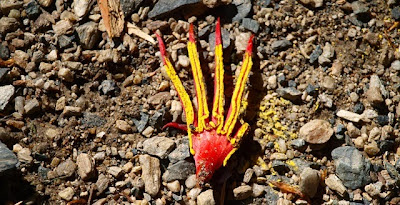More than a menagerie: monkeys' hands, parrots' beaks and f?#@&%! macaws at Dunedin Botanic Garden
You'll notice from the last post I've been in Dunedin, in New Zealand. I was there for an international meeting of botanic gardens (the combined 5th Global Botanic Gardens Congress and 6th Biennial Botanic Gardens Australia and New Zealand Congress). Apart of the usual talking, listening and contemplating, a visit to the local botanic garden was in order.
Dunedin Botanic Garden is a corker. Great horticulture, spectacular plants, and beautiful views and landscapes. The weather was even delightful, with only a few of the rather attractive clouds Dunedin is famous for. It's true, the clouds are quite nice.
The Dunedin Botanic Garden was the first established in New Zealand and celebrates its 150th birthday this year. So old and pretty.
A couple of facts and then you can just enjoy the scenery. It packs a hell of a lot into its 28 hectares and feels like a garden twice that size. There is an aviary, with local and exotic birds, including this pair of macaw that I believe might be trying to produce an egg (but as I'm fond of saying, I'm no zoologist).
There are 6,800 plants including big collections from New Zealand, the Mediterranean, South Africa, Australia and, well, pretty much everywhere in the world.
It's justly famous for its Rhododendrons, 3000 in all, and they were brightly in flower for our visit. The azaleas (as the sign says: Azaleas are Rhododendrons, with distinctive features...) were typically garish yellows and oranges that send my digital camera into chromatic spasms. But the Rhododendron Rhododendrons were gorgeous and reproducible colours.
Lots of great flowers and towering trees, including the floral emblem of the botanic garden, the Clianthus puniceus (Parrot's Beak), and the Mexican Chiranthodendron pentadatylon (Monkey's Hand - you can see why from the fallen flower parts on the path).
As for the rest, well just enjoy without my lewd and rather shallow commentary...















Comments